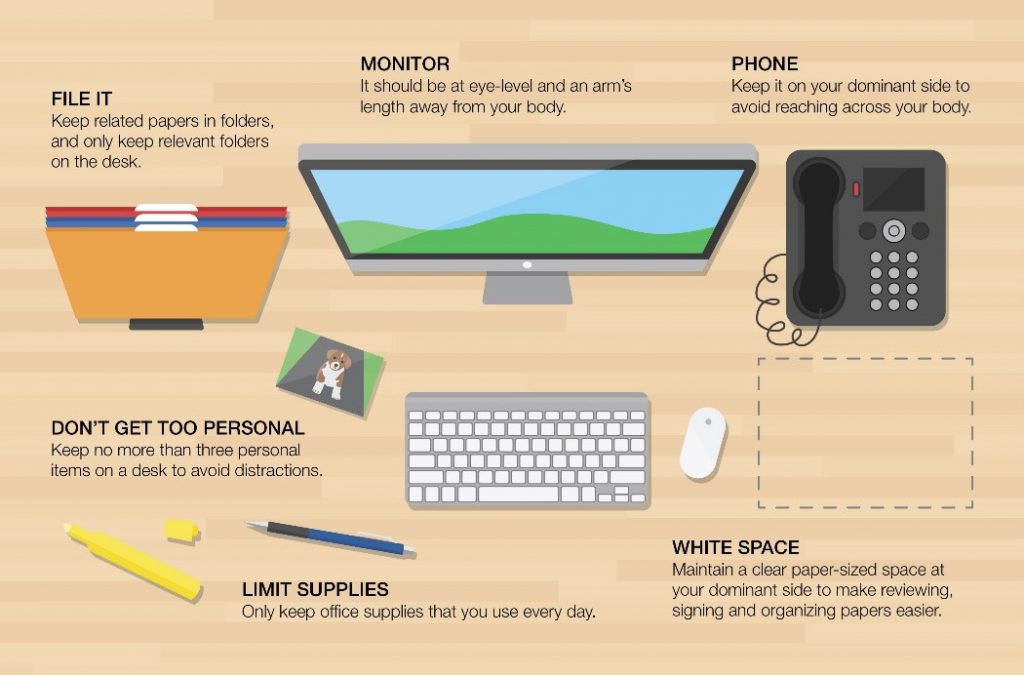
From Chaos to Control
August 8, 2023 | by Kinzie Gaunce
From Chaos to Control: Tips and Resources to Organize Your Procurement Method
To successfully manage procurements and complete projects, it is necessary to have a well-planned and structured approach. It is essential to prioritize organization, communication, and a SMART approach to ensure success.
At REACH 2023 in Cleveland, OH, Anita Chism (NASPO) and Louis Anaya (AZ) presented a session entitled “Let’s Get Organized: Tips and Tricks for Increasing Productivity.” Several tools, procedures, and new ideas were shared to directly relate public procurement to the project management process and help procurement officials establish a continuous culture of improvement within their agency.
Getting Organized
While everyone typically does some form of Project Management in their daily work life, actively managing projects to improve efficiency can be very difficult if you aren’t able to start from a place of organization. Before beginning a new project or procurement, try taking a few minutes to declutter your workspace. If you have time, create a system to manage your workflow at your desk and in your digital workspace. Some might also find it helpful to clean out their email inbox before starting a new project. This can be an especially daunting task, but remember the “archive” button and all will be well!

Setting Goals: SMART
Although each procurement can be different, the process usually begins in the same way: a need to procure something is identified. This automatically sets your final goal, but there are many different ways to track your progress and set milestones to keep things moving in the right direction and on the necessary timeline. Consider the SMART approach the next time a new project comes your way:
Specific: Be specific when stating what you will do
Measurable: Provide a way to evaluate
Achievable: Make sure the scope of your project is possible to accomplish, attainable
Relevant: It should make sense within your job function and improve the business in some way
Time-Bound: Be specific on the date or time frame when you will complete the project
After setting these SMART goals, your project and/or procurement will have
- structure;
- focus;
- maximized efficiency;
- increased motivation; and
- a way to track and celebrate progress.
Different Time Management Techniques
If you are looking for a new way to manage the time you spend completing tasks, you might want to try one of these methods: If these tools are new to you, check out these links to learn more!
Looking for a way to prioritize the tasks at hand?
The Eisenhower Matrix: Introduction & 3-Minute Video Tutorial
Trying to stay focused on one project?
The Pomodoro Technique — Why It Works & How To Do It (todoist.com)
There are many other techniques out there. Check out these TED talks!
Are you a Multitasker?
Most of the time in the workplace we have to wear many different hats at once. In an office where you may be short-staffed and more than a little overworked, you may find yourself multitasking. Most people think they are good at it, but according to the Cleveland Clinic, “Studies show that when our brain is constantly switching gears to bounce back and forth between tasks – especially when those tasks are complex and require our active attention – we become less efficient and more likely to make a mistake.”[1]
It may be difficult to stop multitasking, but the benefits of doing so will soon outweigh the initial discomfort. Almost immediately you will find yourself:
- Making fewer mistakes
- Increasing your productivity and efficiency
- Retaining information
- Becoming less stressed
How to integrate these ideas into your daily workflow
Begin by identifying the processes you already have in place. You can start by documenting what services you and your staff provide, and who your stakeholders are (both internal and external). Then identify the daily tasks that are needed to manage ongoing projects or contracts. Keeping track of all these moving parts can be difficult without the right tools, so using a RACI matrix or another tool will be essential.
What is a RACI Matrix?
A RACI matrix is a chart that helps identify tasks, roles, stakeholders, and action items. It’s a great tool to help you and your team manage projects and tasks more effectively. By visualizing data, you’ll be able to see what’s working well and where improvements can be made. The State of Minnesota’s Department of Transportation maintains a RACI workbook template online. You can make this your own by adding in milestones and deadlines that can help you identify if your processes are taking too long, have too many steps, or if you’re not meeting your goals or completing projects on time.
Achieving success is within your reach! By prioritizing organization, single-tasking, and time management, you’ll be on the path to success in no time. Break down tasks and focus on one at a time, prioritizing based on importance and urgency. You’ll be amazed at how much you can accomplish and how quickly you’ll reach your goals.
Would you like to learn more? Check out our Procurement U courses as well as these skills-focused courses for project management.
[1] “Why Multi-tasking Doesn’t Work,” Cleveland Clinic, last updated March 10, 2021, https://health.clevelandclinic.org/science-clear-multitasking-doesnt-work/#:~:text=One%20study%20found%20that%20just,once%20aren’t%20actually%20that.
